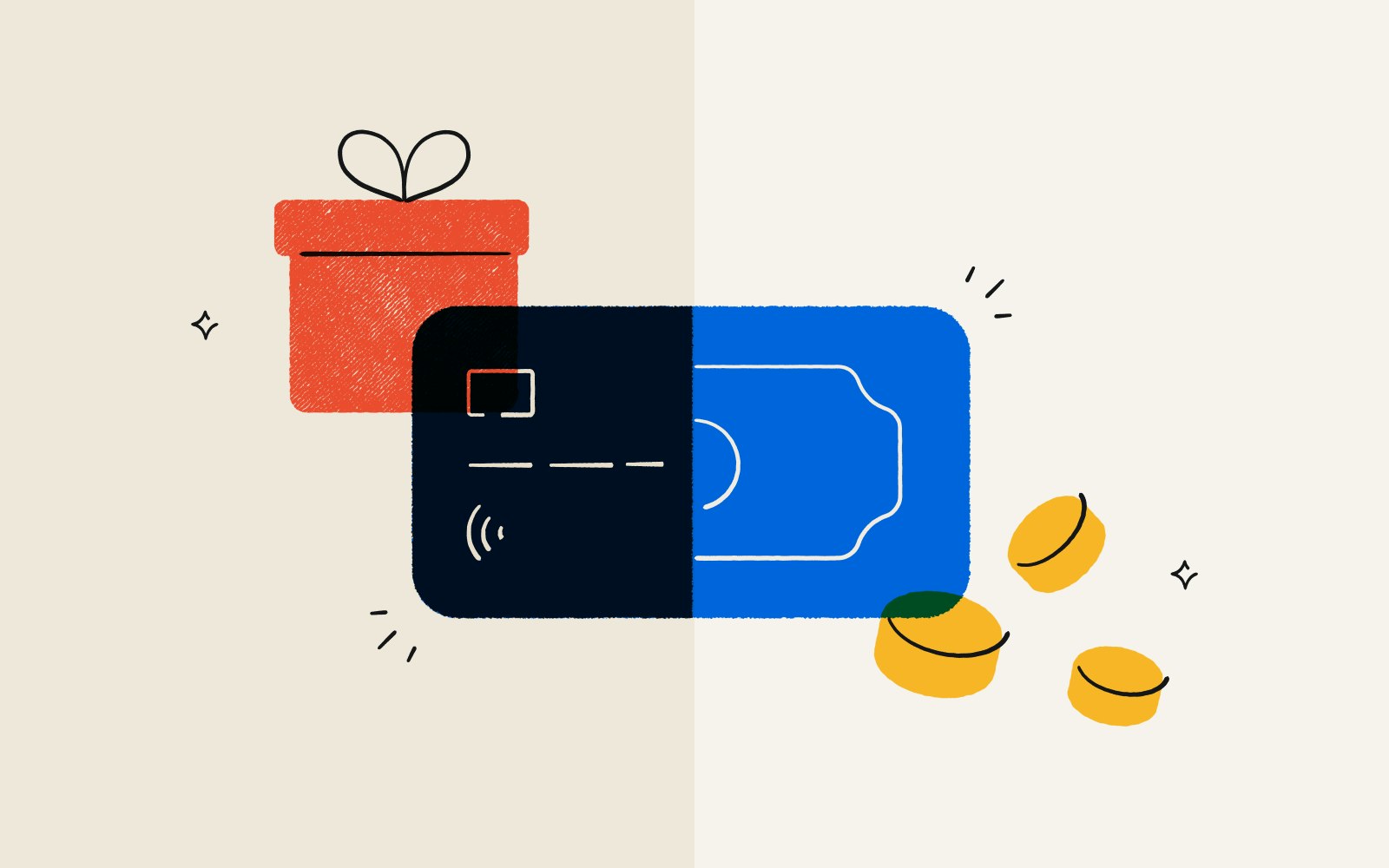Gift cards vs. cash incentives: What's best for rewards programs?
By Mindy Woodall●3 min. read●Oct 14, 2025

Whether you should offer cash or gift cards for your incentive program depends on your goals and your audience.
Cash works best for high-value incentives and situations that require maximum flexibility. Gift cards work best for creating memorable moments for recipients, as well as streamlining program operations.
Before you choose cash or gift card incentives, consider what you're trying to accomplish, who you're rewarding, and how your program operates. An employee recognition program has different requirements than a research incentive or a customer referral program.
When to use cash for incentives
Consider opting for cash when you give higher-value incentives with large enough amounts to feel meaningful. Think milestone achievements or special rewards where you’ll be paying at least $100. At this level, cash gives recipients complete freedom to spend the money however they want to.
Cash also works well when recipients need financial relief rather than recognition. Emergency bonuses and hardship assistance fit this category.
Rebate programs and cashback deals favor cash as well. When people buy something with the promise of money back, cash can feel like a natural fit. These types of marketing promotions encourage purchases and deliver tangible savings for the customer.
The downsides of cash
Cash isn’t great at creating memorable moments. A small bonus gets deposited, pays for groceries, and leaves no lasting impression. Cash also has lower social value. Recipients don't share or celebrate cash payments the way they might with other rewards.
When to use gift cards for incentives
Gift cards address the limitations of cash incentives while adding their own advantages.
The emotional advantage
Gift cards create an emotional impact. They feel like a treat rather than a transaction. Recipients don’t view gift cards as part of their usual earnings, so they feel freer to spend on wants instead of needs, which makes the reward more satisfying and memorable.
More control and easier operations
Gift cards come with more control over spending and where rewards get redeemed. For example, closed-loop gift cards direct incentives to specific retailers (e.g., you can only spend a Target gift card at Target). Open-loop cards can be spent at more places, so they offer cash-like flexibility with simpler tax tracking (think Visa prepaid cards).
Operationally, digital gift cards streamline distribution. Use an incentives platform like Tremendous to send gift cards instantly, track redemptions, and eliminate the manual logistics of processing payouts for large groups of people. This type of platform also simplifies tax compliance.
The downsides of gift cards
The main downside of gift cards is that retailer-specific rewards can feel restrictive or impersonal. But there are ways to avoid this so you don’t risk giving recipients gift cards to places they don’t shop.
Use an incentive platform that lets you offer thousands of digital gift card options, including open-loop prepaid cards accepted around the world. Recipients can choose the reward they want most, and you don’t have to stress over trying to predict what they want.
It always makes sense to offer more incentive options instead of fewer. While some recipients may be happy with an Amazon gift card, giving more options can make the recipient feel empowered. They're making their own choice for their payout.
Kari Leigh Deepak
Client Support Lead at Tremendous
Incentive platforms give you an easy way to offer freedom of choice even when you don’t know every recipient personally.
Gift cards vs. cash for different use cases
Evaluate your specific use case before you settle on which incentives to offer. Different program types benefit from different reward formats.
Research incentives
For market research and academic studies, both cash and gift cards can work depending on your participant pool and study design. Gift cards are an easy, flexible choice for things like surveys or focus groups. Offering prepaid cards can also combine the flexibility of cash with the memorability of a gift card.
Cash sometimes works better for longitudinal or diary studies that require a significant time commitment. Higher cash incentives can also help you engage niche audiences and encourage responses.
Employee recognition and retention
For ongoing recognition such as hitting quarterly goals or project milestones, gift cards are an excellent choice. They create celebratory moments that small paycheck bumps don’t.
Use cash instead for annual bonuses, retention incentives, or substantial amounts where employees base their financial plans on that money.
Sales incentives and channel partner programs
Sales teams and channel partners can respond to both cash incentives and gift cards. Structure incentive programs in tiers, with gift cards for frequent, smaller wins (hitting weekly targets earns a $20 card) and cash payouts for major milestones (reaching an annual quota earns a larger bonus).
Gift cards work for spot bonuses and maintaining momentum. Cash works when amounts are large enough to function as compensation.
Marketing promotions and loyalty rewards
Gift cards are a great choice for incentivizing customers as part of various marketing programs (like referral programs, loyalty rewards, and cashback promos). They position the reward as appreciation rather than a payment, and the memorability aspect means you can use lower amounts and still create appealing offers.
Examples of when each incentive type shines
Gift cards shine when:
You want the reward to feel special
You're recognizing smaller, more frequent achievements
You need to quickly distribute rewards to a large group
You want recipients to treat themselves instead of covering bills
Cash shines when:
The incentive amount is higher ($100 minimum)
Recipients need financial flexibility more than a "treat"
You're compensating someone for notable work
A formal payment fits the situation better than a quick gift
Key takeaways
Match your incentive format to your program goals and audience needs.
Use gift cards to deliver stronger emotional impact, create memorable experiences, and simplify operations. They’re a good fit for recognition programs, frequent rewards, and as gestures of appreciation.
Cash delivers maximum flexibility and works better at higher values. Use it for giving substantial amounts, in situations that require financial freedom, or in contexts that call for compensation rather than celebration.
You can also offer both cash and gift card incentives as part of your program. Platforms like Tremendous help you offer both gift card and payout options and let recipients choose from a catalog of rewards that includes a huge variety of gift cards as well as ACH, PayPal, and Venmo transfers.

